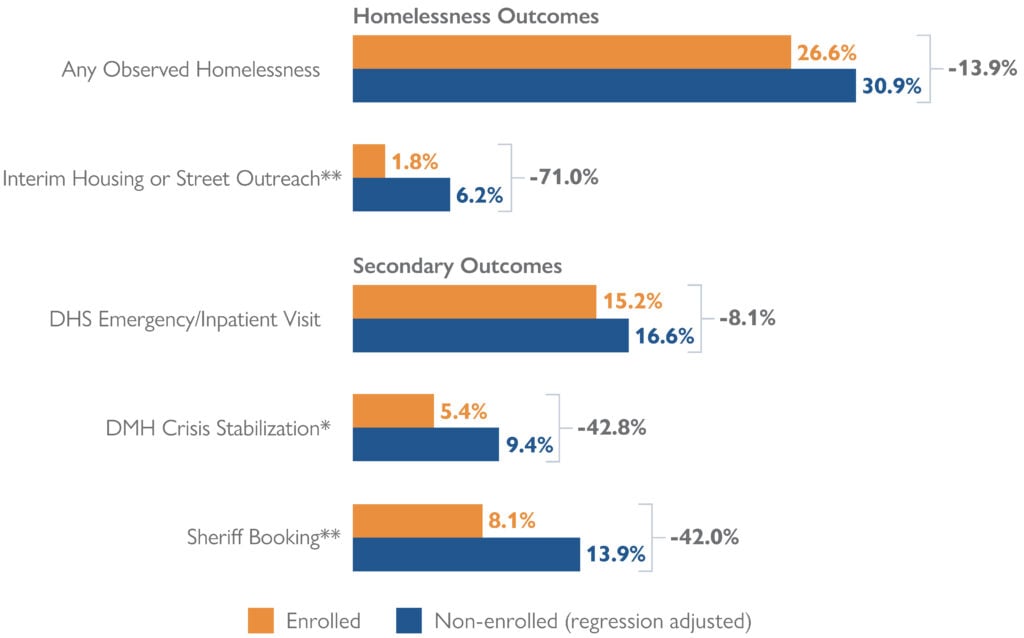- By:
- Category: Homeless and high-needs

REPORT: Early Outcomes from the Los Angeles County Homelessness Prevention Unit ![]()
PRESS RELEASE: New Report: Early Signs of Success from LA County’s Homelessness Prevention Pilot
Homelessness remains one of the most urgent challenges facing Los Angeles County. Each year, most people entering services are either new to the system or returning after time away, an ongoing inflow that underscores why prevention is essential. Permanent solutions to homelessness must go beyond rehousing efforts and include strategies to prevent it before it occurs.
This policy brief provides an update on the Homelessness Prevention Unit (HPU), a program launched in 2021, which uses a first-of-its-kind predictive model to proactively reach people at the highest risk of becoming homeless and connect them to stabilizing services before they lose their housing.
This report focuses on preliminary outcomes from the HPU’s pilot phase, before the launch of the formal randomized controlled trial. During this period, enrollment in the program was associated with improved outcomes related to housing stability, homelessness, and other adverse events. While these early results are promising, the limitations of the methods used highlight the need for rigorous evaluation through the ongoing randomized trial, expected to conclude in 2027.
Key Findings
1. Enrollment in the HPU during the pilot period, which occurred before the start of the formal evaluation, is associated with a 71% decrease in the use of street outreach or interim housing within 18 months of referral to HPU outreach. We also observe lower rates of any observed homelessness, mental health crisis stabilization, and criminal justice involvement, although whether or not these associations are the effect of the HPU needs to be resolved by the formal evaluation.
Figure: Individuals enrolled in the HPU during the pilot period had better outcomes over 18 months compared to individuals on the high-risk list who were referred to outreach but not enrolled.

Notes: This figure provides outcomes for the enrolled group (N = 335) and regression adjusted outcomes for the non-enrolled group (N = 1,285) within 18 months of being referred to HPU outreach. The regression adjusted outcomes are estimated using an OLS regression controlling for all covariates in Table 2 of the Appendix plus interacted fixed effects for month, household type, and Spanish language status. Numbers above the brackets represent percentage changes for the enrolled group in comparison to the regression adjusted non-enrolled group. Asterisks next to variable names indicate the statistical significance of differences between the enrolled and regression adjusted non-enrolled groups where **: p < 0.01 and *: p < 0.05.
2. The rate of enrollment in the HPU increased by 67% after the HPU made changes to its outreach and enrollment processes during the formal evaluation period.
Suggested Citation: Blackwell, B., Caprara, C., Rountree, R., Casey, P., Vanderford, D., Battis, C. Early Outcomes from the Los Angeles County Homelessness Prevention Unit. California Policy Lab. University of California. (2025). https://capolicylab.org/early-outcomes-from-the-los-angeles-county-homelessness-prevention-unit/
